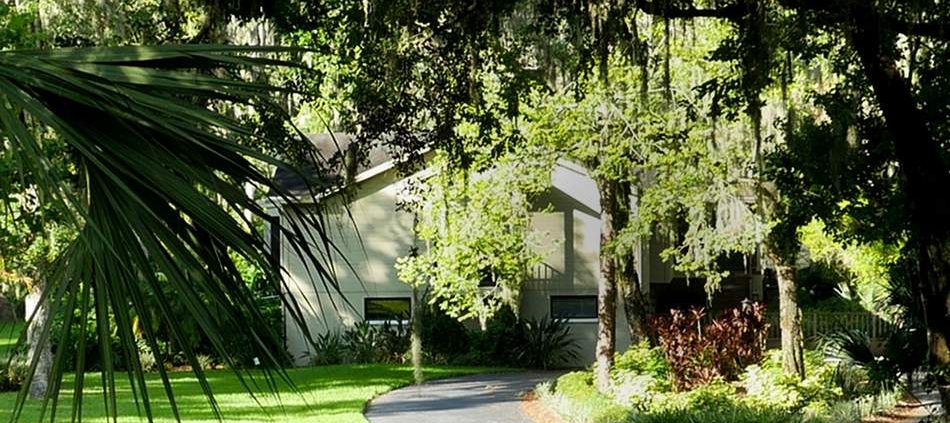If it’s a sellers’ market, why are so many Tampa Bay sellers cutting their prices?
Despite a shortage of available homes, many Tampa Bay sellers are getting a rude awakening when the sign goes up but no offers come in .
More sellers are being forced to drop their prices as the reality hits that buyers don’t love that funky tile or purple accent wall.
According to a new analysis by Zillow, two-thirds of the nation’s largest housing markets — including Tampa Bay — had more listings with price cuts than they did a year ago. In just the seven days ended Wednesday, prices were reduced on nearly 1,300 single- family homes in the four-county bay area — 11.5 percent of all listings. Many of those already had dropped in price and some are in especially hot markets like Tampa’s Seminole Heights and St. Petersburg’s Crescent Lake area.
The problem: Sellers assume that a hot market means they can get top dollar for their home.
“Everybody thinks their house is the greatest on the planet,” says Judson Kidd, an agent with Southern Roots Realty in St. Petersburg. “But there is so much differentiation between one side of the street and the other, between one house and another.”
One reason so many homes are overpriced is that so many real estate agents are competing for so few listings. In the past two years, more than 60,000 people have gotten Florida real estate licenses yet the supply of homes for sale is at its lowest level in more than a decade.
A lot of agents will price where the seller wants just so they can stick a sign out front,” Kidd says “Then maybe somebody from out of town will blow in and pay that ridiculous price.”
Or maybe not.
“Overpriced homes stay on the market longer and sell for less than homes that are priced correctly to start,” says Jennifer Zales, a Coldwell Banker agent in Tampa. “It is important to act quickly and consider a price reduction early in the listing period. The number of buyers viewing a new listing drops significantly after the first few weeks so don’t wait to take action.”
Charles Richardson, Coldewell Banker’s senior regional vice president, analyzes market trends to help Zales and other Coldwell agents. He says he’s found “an amazing number” of price cuts at almost every level, whether it’s houses over $1 million or under $300,000.
In Hillsborough County in July, for example, more than half of all single- family homes for sale had undergone price “repositioning” in the past 60 days. Of houses listed between $150,000 and $300,000 — so much in demand there is only a two-month supply — 70 percent had dropped in price.
“You’d think that just because there are a lot more buyers than sellers, they’d be falling all over themselves to buy property, but until it’s price well, they will not,’’ Richardson says.
During the real estate bubble of 2000 to 2007, buyers snatched up homes at ever soaring prices on the assumption they would continue to appreciate in value. Of course that turned out to be wrong, and the 2008 financial crash sent prices plunging by half or more.
In early 2013, prices started to climb again and now have reached pre-crash levels or higher in some parts of Tampa Bay. This time, though, buyers are starting to push back.
“Venetian Isles is a prime example,” Kidd says of the waterfront community in northeast St. Petersburg where prices have skyrocketed. “Sales have (almost) ground to a halt because of the price appreciation that is coming out of nowhere.”
In the first six months of 2016, the median price of houses sold in Venetian Isles was $641,000. Not a single house went for more than $1 million. In the first six months of this year, the median price was $745,000 and four homes sold for more than $1 million.
Currently, 14 Venetian Isle houses are for sale, with six listed between $1 million and $4 million. More than half of the houses have had price reductions yet still haven’t sold.
Kidd recently worked with a buyer from California — no stranger to staggering home prices — who looked in Venetian Isles but decided that even the reduced prices were too high. He ended up paying $625,000 for an upgraded waterfront house in nearby Ponderosa Shores.
As a rule of thumb, Kidd’s firm suggests that sellers drop the price 10 percent if they haven’t gotten an offer in 15 days and 20 percent if there are no offers in a month.
“But you’d be surprised how much they are initially, ‘No, no, no, this house is worth it,’” he says.
Among the homes that tend to be priced the most unrealistically at the start are FSBOs — For Sale by Owner.
“If you follow them on Craiglist, you see a lot more price reductions than you do on listed properties,” says Jack Keller, a veteran St. Petersburg agent. “For sale by owners don’t have the expertise of a Realtor guiding them on what their beginning price should be.”
Even at a time when homes are in relatively scant supply, sellers need to remember that buyers are savvier than ever, real estate experts say. Through online sites like Zillow, Trulia and others, they can pretty well scope out a house without ever setting foot in it. They can also compare houses, prices and sales figures more easily than they could even a decade ago.
“With all the information on the internet, buyers are highly educated today,” Richardson says. “They are not going to pay more than what the property really should be selling for.”
Contact Susan Taylor Martin at smartin@tampabay.com or (727) 893-8642. Follow @susanskate

